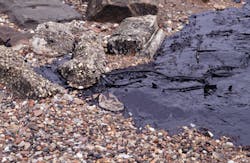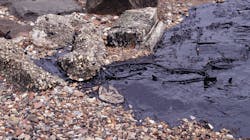More than 6,000 spills and other incidents occurred at the U.S. onshore oil and gas sites last year, according to data collected by EnergyWire. This means that an average of 16 spills occurred across the United States on a daily basis, marking a 17 percent increase since 2010 in the 12 states for which data was compared.
There are thousands of oil and gas wells operating in the United States at any given moment and accidents like spills happen every day. However, data regarding these spills is scattered and fragmented, so a nationwide analysis is impossible to make. Spills on public land are reported to the Bureau of Land Management but data about the rest is kept in state agencies across the country. EnergyWire spent several months gathering data from a dozen states to put the pieces of the puzzle together and create a picture of the current state of U.S. oil and gas wells.
The report found that, although the number of spills rose by 17 percent in three years, the number of wells drilled was up by 40 percent. Overall, at least 15.6 million gallons of oil, fracking fluid, wastewater and other liquids were spilled at production sites in the states monitored in 2012. The majority of this remains contained within the wells but there are occasions when oil gushes out of the well and can harm the environment beyond the site, EnergyWire said. North Dakota reported that 80 percent of all spills remained inside the well entirely, while Utah stated that 78 percent were contained in the well. In Colorado, however, the figure barely reached 38 percent.
The total amount of spills is actually far greater than this research found, as reports in states like Pennsylvania, Oklahoma and Colorado, where drilling is a major industry, sometimes exclude spill amounts. Spills from interstate pipelines and offshore wells are also not included in the data. According to drilling companies, at least a third of the spilled amount is typically recovered.
RELATED: Nanomaterial shows promise for oil spill cleanups
People living around these areas and environmental organizations claim that the frequency with which such spills happen is a signal that oil and gas companies are not doing their best to prevent and manage them. The U.S. oil and gas industry claims that companies have a generally good record of environmental protection and take safety seriously. Jack Gerard, president of the American Petroleum Institute (API), commented that there are risks associated with producing energy but the industry has a strong safety record.
Supporting this statement, a spokesperson for the API cited a 2009 study showing that, overall, the number of oil spills in the United States has fallen by more than three-quarters since the late '60s. However, it also showed that the decreases were offshore, while inland spills have increased.
According to the EnergyWire report, there are many different types of spills. The most common are also typically less serious, such as tanks overflows or equipment malfunction. Human errors are also frequent, such as operators leaving valves open during crew changes. The biggest spills happen when something goes wrong with the construction of the well, and these are also the most expensive to repair.

